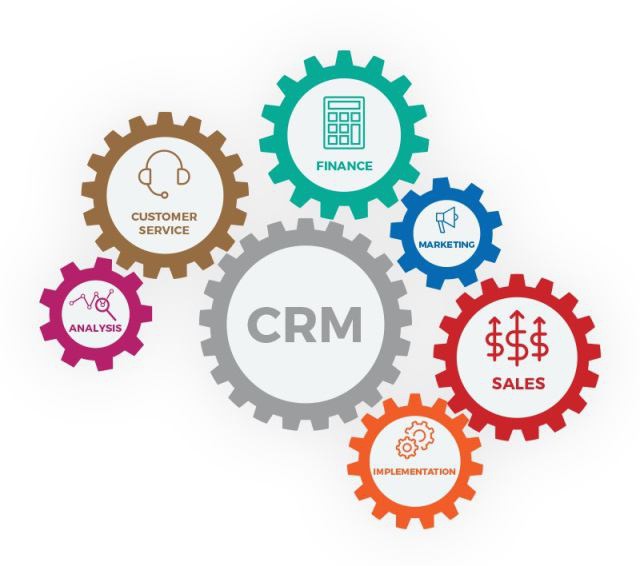Although in the West an audit of a sales department is almost an obligatory event for any company, many Russian entrepreneurs still underestimate its value. And in vain. Indeed, if we turn to statistics, we can see that in just ten years the level of competition has increased significantly, and the rate of profit, on the contrary, has decreased (from ~ 70-80% to 10-15%).
A competent audit of the sales department makes it possible even at the initial stages to find out where the Achilles' Heel of the company is located and what problems hinder the effective marketing of products. Simply put, this is a test that determines how effectively this structural unit works and how its performance can be improved.

When to spend
This largely depends on the size of the company, as well as on the specifics of the market in which it operates. However, experts advise conducting an audit of marketing and sales at least once a year. Verification is necessary in such situations:
- sales growth at the enterprise below the planned indicators;
- the manager wants to increase profits due to sales growth;
- regular customers leave the company (or reduce the volume of purchases);
- a competitor takes higher positions and conquers markets that are not yet available to you;
- in the department there is a "turnover" of personnel.
If the audit is conducted correctly, the company will be able to achieve significant growth in sales and increase the efficiency of the department.

Key Tasks
The first condition for organizing an audit is to clearly set goals. It is necessary to determine at what exactly stage the deals are most often broken, what are the strengths and weaknesses of the staff, which clients are easiest / hardest to work with. In addition, technologies that employees use when communicating with potential buyers are being studied. What is it for:
- identify errors, miscalculations in the marketing system;
- understand what changes can be made to the existing system;
- identify the main directions of increasing sales;
- make the sales process transparent and understandable - both for employees and for management;
- analyze the ratio of costs and revenues.
The audit should be conducted by independent and disinterested employees. In large companies, there are special units for this.
Important:
Any checks at enterprises in the Russian Federation are carried out in accordance with the Federal Law "On Auditing" dated 12.30.08 No. 307.
What to evaluate
No, not only the number of purchases, as you might think. And not even the conversion rate. Take a look at the process of creating and auditing the sales department of Business Youth, the largest community of entrepreneurs in Russia.

As you can see, the performance of this unit is evaluated according to 25 criteria. At first glance, some seem insignificant, but practice shows that only an integrated approach allows us to achieve maximum efficiency of the sales department.
There are two main stages of the audit - external and internal audit. At the same time, they analyze both the work of the employees themselves and factors independent of them.
External audit
The first step is to research the market, its size and configuration, as well as the competitive environment in which the company operates. It doesn’t matter how professional sellers work for you, if the consumer has the opportunity to buy something much better and cheaper. Do you agree? Then let's talk about what you need to pay attention to.
Market
When assessing both existing and potential markets, it is necessary to determine their capacity and structure, to answer the following questions:
- What is the product distribution model? Where and how do potential customers look for information, make purchases?
- What are the main consumer segments? What are their features? Which segments are key (who are you targeting)?
- What are the prospects for this market? Development trends? Is it developing or narrowing?
It is necessary to calculate the market share occupied by the company in a given region or country. The analysis also uses the share of voice indicator - the percentage of marketing expenses in a certain territory in the overall cost structure.

Key clients
Almost every company has them. Moreover, key customers are not always the ones that bring the most revenue. These may be buyers who open up access to a new segment of the market, help create a certain reputation, etc.
When conducting an audit of the sales department, it is important to understand how effectively the company attracts and cooperates with this particular category of consumers.
To do this, it is necessary to divide the target audience into several groups:
- Key clients. Those with which it is most profitable to collaborate - they must be at the center of the activity of the enterprise.
- Promising. Interested in working with you, and therefore are considered as the main object of commercial activity.
- Background. This category includes customers whose orders you can carry out easily and without costs, but they do not contact you regularly and the size of deliveries is small.
- Others. These are customers who will never become your key customers, as their need for products does not satisfy the needs of your business.
During the audit, it is necessary to find out what criteria are used for segmentation, which of the current or potential buyers corresponds to the “portrait of the ideal customer”. You should also calculate the level of profit from each category and understand what part of the needs of key customers the company currently satisfies.

Competitors
If you look at any example of an audit of a sales department from leading consulting companies, you can see that they play a significant role in competitive analysis. The reason is simple - it is the activity of other enterprises in the market, their number and activity often determine the company's strategy.
What you need to find out at this stage:
- main competing companies and market leaders;
- what they offer (goods, services, assortment);
- the nature of competition (intense, weak, etc.);
- marketing strategies and product distribution channels used.
All your competitors can be divided into 4 categories.
The first type is direct competitors who do the same and offer the same range of products and services.
The second type is more interesting - they are called "competitors for the budget." What does it mean? Suppose your potential client thinks that he would eat for dinner within 700 rubles. And here he has options: order pizza, go to the sushi bar or take groceries in your store and cook something at home. In this case, several companies "compete" for the right to better and better satisfy the same need.
The third kind of competitors are innovators offering goods and services that are not yet on the market and go “one step ahead” of the others.
And finally, the fourth option is a situation where a potential customer can do what you offer on his own. For example, consulting companies that provide audit services for the sales department constantly lose part of the income due to the fact that many entrepreneurs do not want to pay more and entrust this task to their employees.

Internal audit
The internal audit of the sales department can be carried out in parallel with the external or after its completion. To do this, employees performing the audit should have unhindered access to all reporting and financial documents of the unit.
Examples of internal audit questions for the sales department that need to be answered:
- Who are we: the leaders, the most experienced / efficient / cheapest? (you need to choose only 1 advantage and answer from two positions - who you are now and who you want to become).
- What do we sell: product, product + service, product + service + knowledge?
- Why choose us? What can we do so that the next time they immediately contact us? It is extremely important to have good feedback, rather than speculate.
- Where are the main points of contact of the company with the target audience (website, subscription to email newsletter, commercial offer, business cards, etc.)?
Internal audit also consists of several important steps. What aspects of the sales department need special attention? This is what professional auditors say about this.

Sales Management Organization System
It is important to determine whether the sales and KPI plans (performance indicators) are adequate and consistent with the overall strategy of the company. The analysis takes into account such factors:
- existing and necessary number of sales staff;
- the level of qualification of employees in relation to your products and / or business of the client;
- motivation system (tangible and intangible incentives, evaluation criteria);
- average size and order amount;
- company fame among potential customers;
- correlation between planned and real indicators.
An internal audit of the QMS of the sales department (quality management system) is carried out. It is necessary to assess how the organization of the work of the unit corresponds to the key principles - customer orientation, staff involvement, continuous improvement, decision-making based on facts, etc.
The sales department should be a kind of "heart" of the company, whose opinion is taken into account when developing strategies and operational plans for all other departments.
A convenient method of conducting research is a SWOT analysis, which allows you to describe the activities of the enterprise, its strengths and weaknesses, capabilities.

Reasons for customer churn
Why are they leaving? This is the main question that needs to be answered in this block. There are difficulties here, as many buyers immediately take a defensive position and are not ready for a constructive dialogue about what exactly pushed them away. In turn, sales representatives often blame prices for everything, which removes responsibility from them, both from the consumer and from the manufacturer. However, it is important to "get to the bottom" of the true complaints and the reasons for dissatisfaction and distrust on the part of potential customers, to understand at what stage the deals are broken and why.

Distribution system
The next step is to analyze the geography and structure of sales, the main sales channels and partners. There are many options here, from direct deliveries to complex multi-level distribution systems. Depending on the specifics of your business, you need to determine:
- the number of distribution levels and intermediary companies with which you work;
- how the existing system meets the goals and objectives of the company;
- which intermediaries and specific outlets bring you the greatest profit;
- how the sales volumes and profits of each of the participants will change with an increase or decrease in the number of distributors;
- What is the market share of various intermediaries (existing and potential).
Often at this stage, a cost analysis of the organizational structure of the sales department is also carried out. Which, in turn, allows you to determine how much the company overpays or underpays its employees.

The work of the head
If you look at almost any example of writing an audit of a sales department, you will see an extremely important point - an analysis of the work of a manager. To see the full picture, it is important to evaluate the degree of centralization and the methodology for receiving reports.The audit takes into account both the effectiveness of the department’s work management and the quality of control.
At this stage, the process of work is investigated: how are managers' activities planned, how do they get tasks, who controls the quality and terms of their implementation, how is the report database filled. The purpose of this test is to make sure that the management of the department sets clear and real tasks for subordinates.

Service system and staff work
The final stage of the study is, in fact, an assessment of how company employees interact with customers. Unfortunately, for many entrepreneurs, "customer focus" is still just a buzzword from the business hangout. However, this is a very real and even measurable concept. What needs to be done at this stage:
- identify the needs and expectations of customers;
- analyze existing standards of service quality and introduce new ones (according to specific, measurable criteria);
- evaluate the quality of feedback (the number of questions and complaints, the speed of response of employees, etc.).
It is desirable that all employees of the sales department take a direct part in the development of quality standards and their improvement. In addition, it is necessary to describe and implement the scripts of the best sellers - that is, to understand how those who manage to conclude the largest number of profitable transactions work.
Create a checklist and take stock
Any sample of the audit of the sales department, regardless of the niche, contains the so-called checklist of the audit of the sales department. In fact, this is a list of key requirements and parameters that determine the state of the company and the performance of this structural unit. It is drawn up before the start of the audit, and during the audit, the commission makes appropriate notes - what is, what is missing, what needs to be improved.
What items should the checklist contain?
First of all, it depends on which elements of the sales system are analyzed. For example, to assess compliance with merchandising standards, the most important criteria are:
- monitoring of goods that are in stock;
- compliance of product price tags and product shelf life;
- compliance with norms and standards of service by sales representatives and promoters;
- the presence of POS materials (advertising flags, stickers, wobblers, etc.).
Audit results can also be presented in the form of a report or presentation with visual graphs and tables. Based on the data received, the company develops specific solutions to improve the efficiency of the sales department.